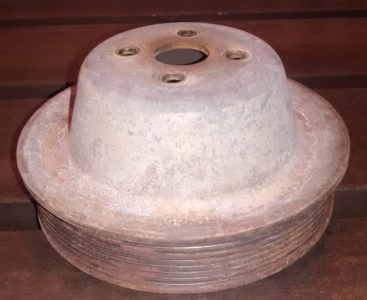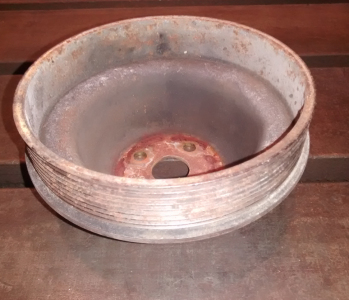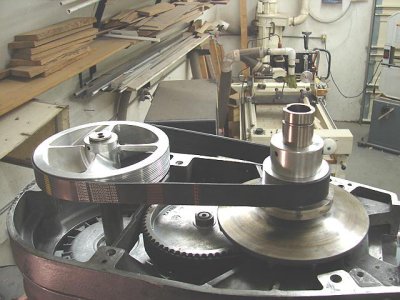- Joined
- Jul 23, 2014
- Messages
- 347
My cousin asked me to make a new pulley for his 4cyl cummins. This is the stock one.


The goal is to make a new one from aluminum that includes accommodation for a second belt to run an accessory. How fussy are the ribs/grooves dimensionally and is there an insert already designed for these belts or would I be best off grinding a hss bit to match the angle?


The goal is to make a new one from aluminum that includes accommodation for a second belt to run an accessory. How fussy are the ribs/grooves dimensionally and is there an insert already designed for these belts or would I be best off grinding a hss bit to match the angle?


